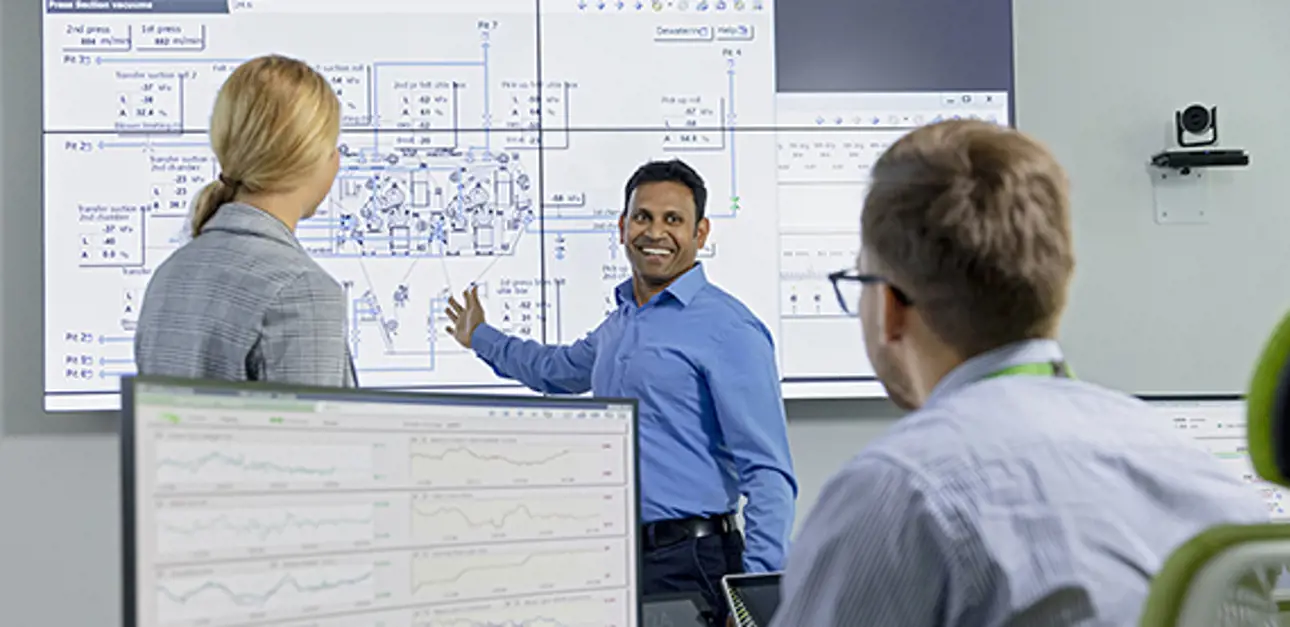In mill-wide optimization, one plus one makes more than two

When we think about the pulp and paper industry, and the benefits companies are looking for, they usually want to increase the profitability of their mill without having to make big changes to their equipment. Quite often, the focus is on just one thing like understanding bottlenecks, increasing production or finding ways to save on raw material costs.
However, many companies are already exploring the potential benefits of digitalization and the Industrial Internet in their strategies to optimize processes and gain a more holistic view of their operations. Typical targets with more autonomous operations are to improve reliability and develop operational performance.
Autonomous systems can help improve reliability, because instead of being reactive, they can provide predictive and prescriptive information for decision making. Autonomous machines can learn how to optimize and run themselves, thus improving operational performance.
Big money between the processes
A lot of these things can be done already. However, they are typically undertaken for individual machines or individual process islands.
Even more benefits are to be discovered when data is shared between processes. By “between processes,” I mean that even if a whole process is optimized, the data is not shared with any other processes in the chain. For example, if you combine and optimize the control systems of a fiber line and paper machine, you get better results than if you optimize the lines individually.
For mill-wide optimization to work, the main thing required is to have a coordination application for automatic decision making that can harness recent advances in optimization technology. The application accounts for interactions between processes, storage levels and delays, process and quality constraints, and future shutdowns and slowdowns.
A mill-wide approach helps achieve improvements in many areas, ensuring the mill’s assets are used optimally. The savings for different optimization scenarios can be calculated by reoptimizing the past through discovering a mill’s old data for a year or more. Such calculations have shown that integrating and coordinating different process areas or islands can result in savings of millions or tens of millions of euros.
In the rapid digitalization era, many enhancements are already within reach. With mill-wide optimization, we will probably end up with one plus one making more than two.
Related reading


